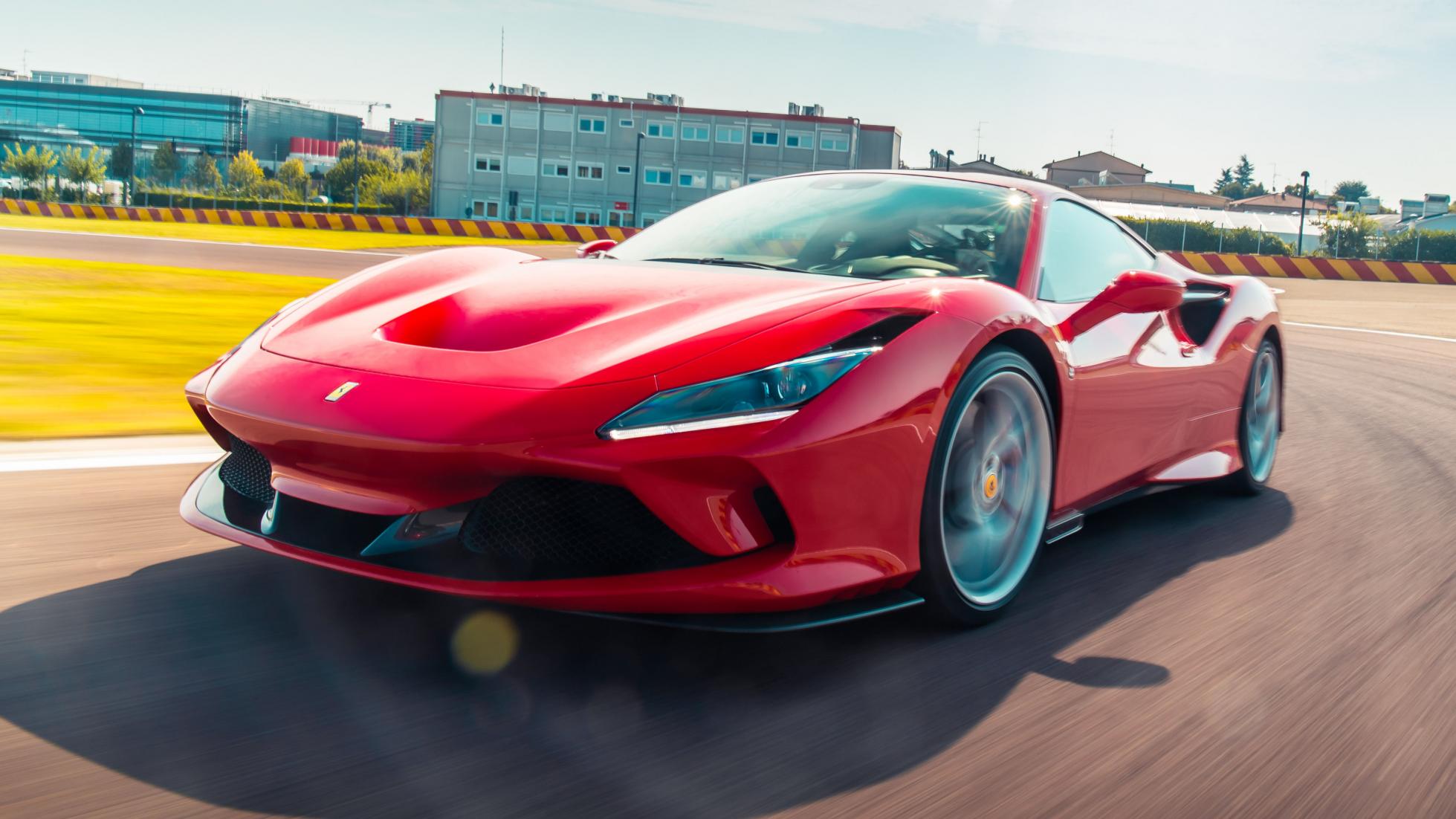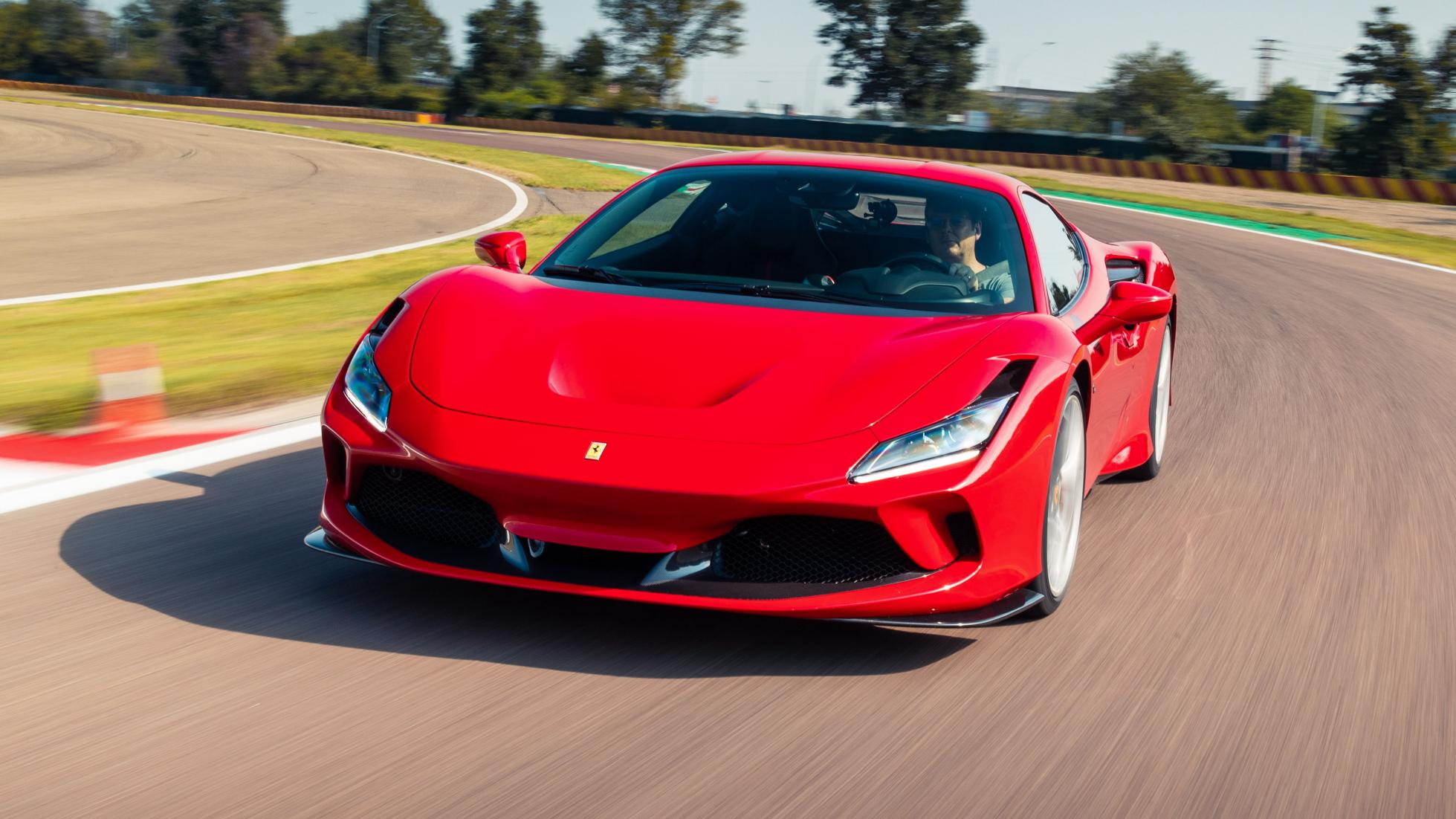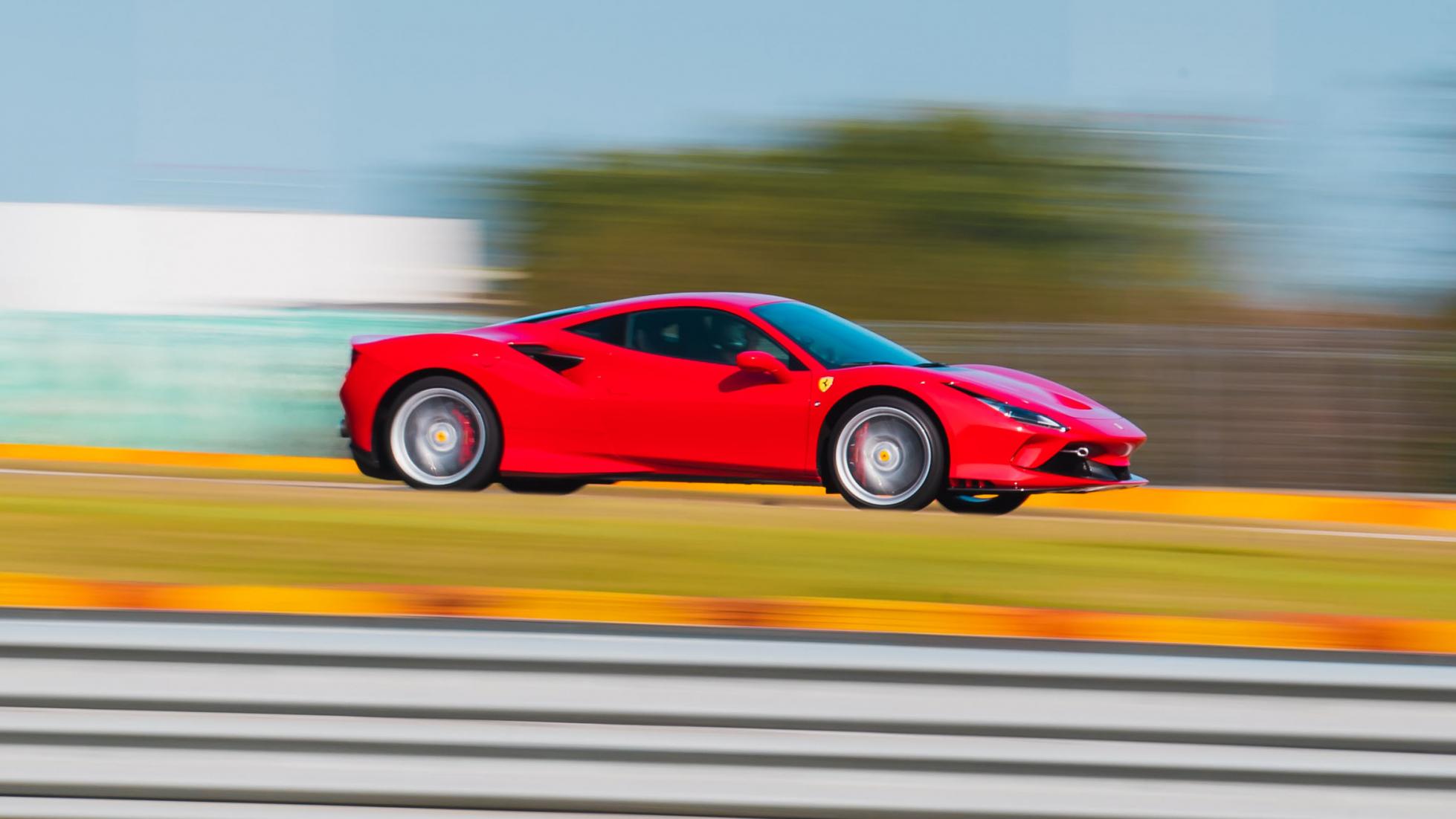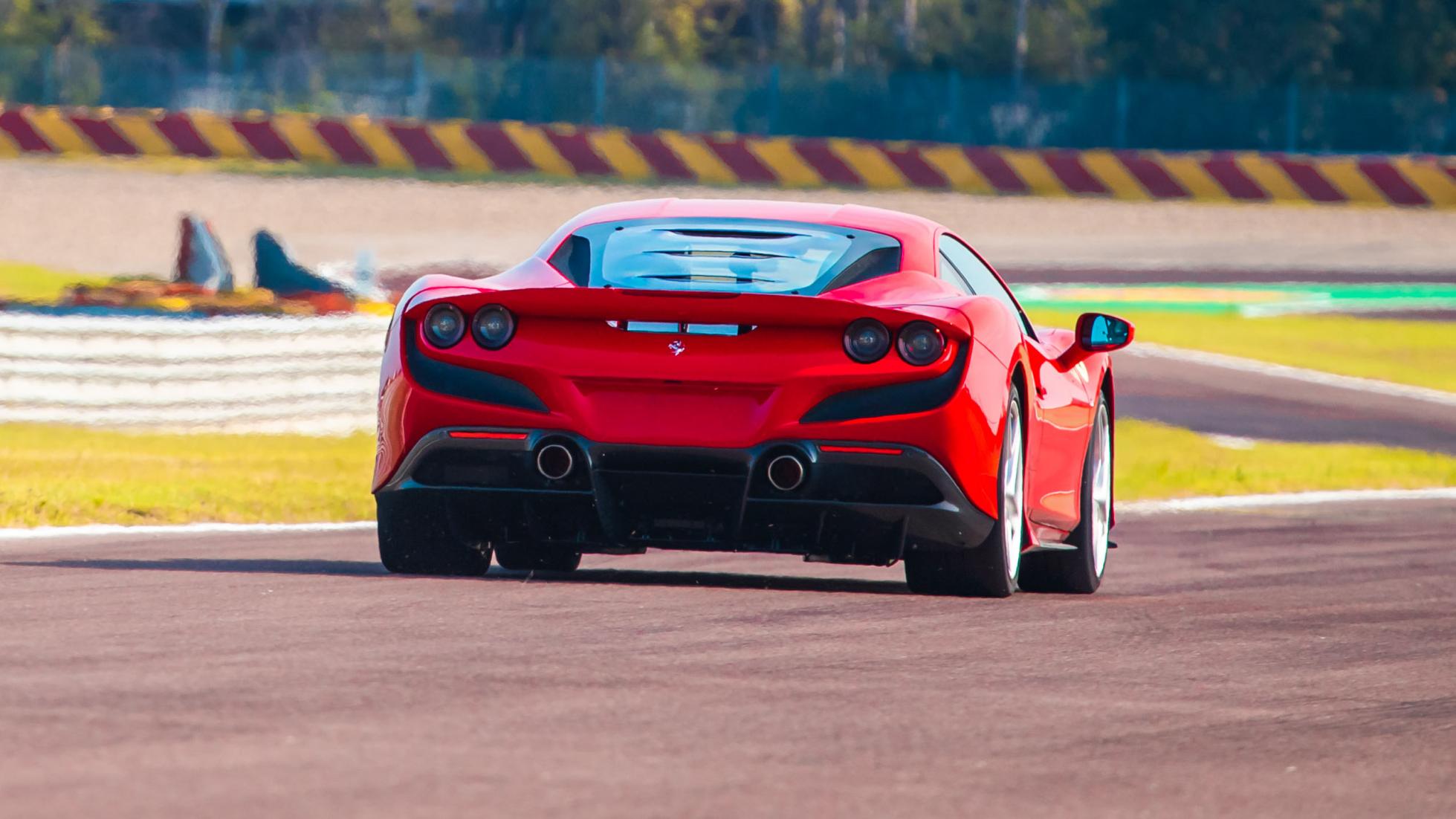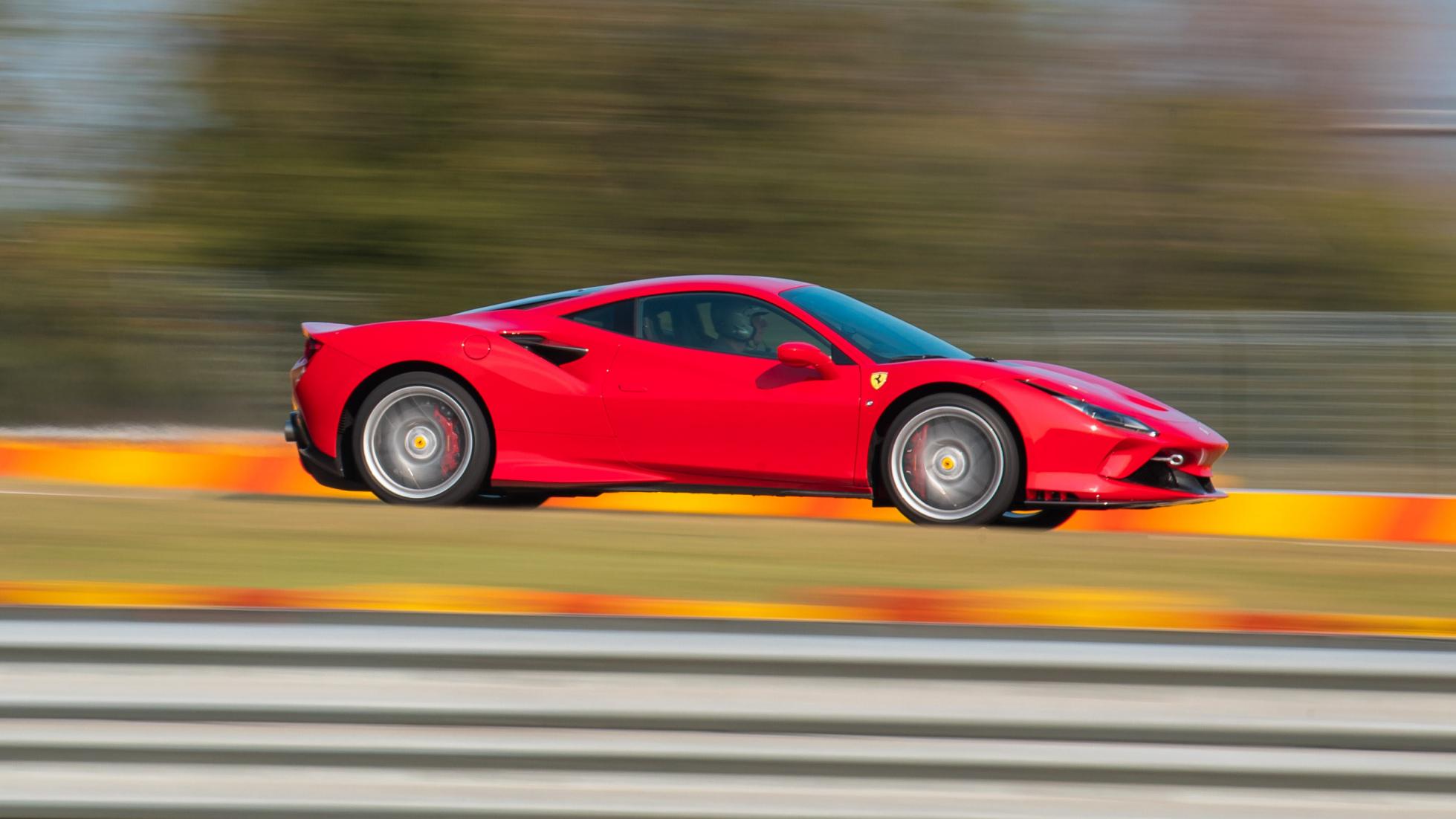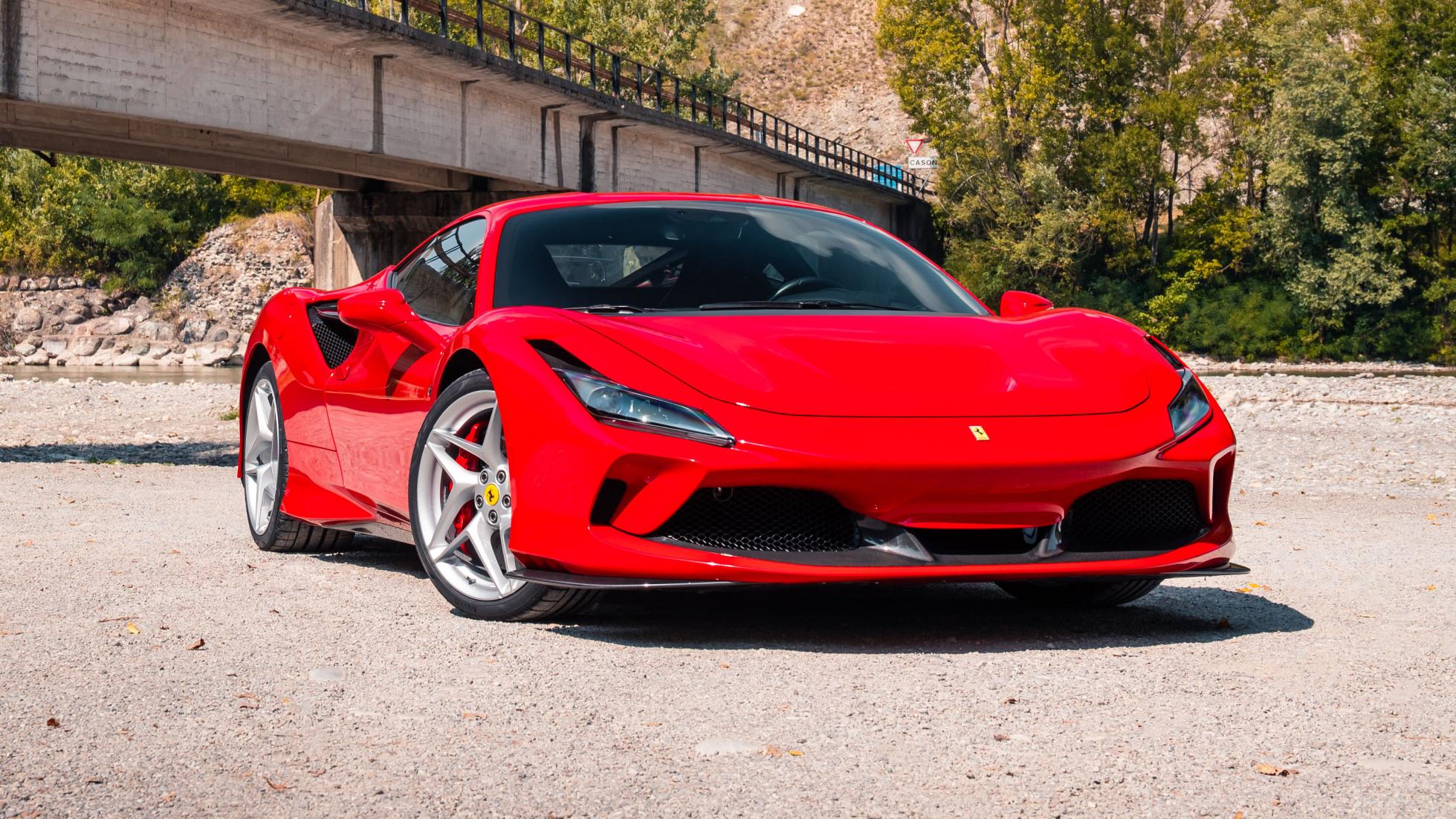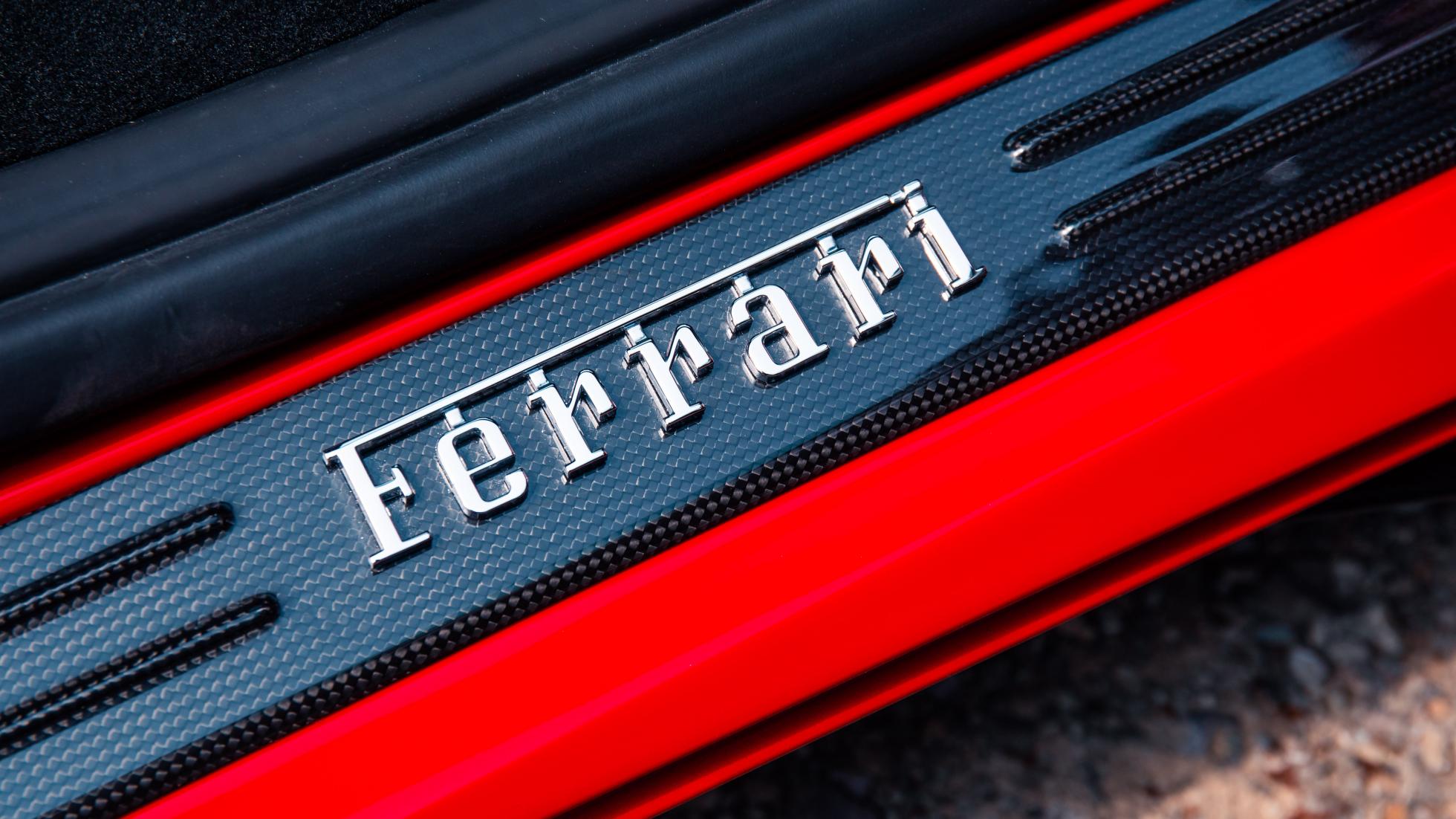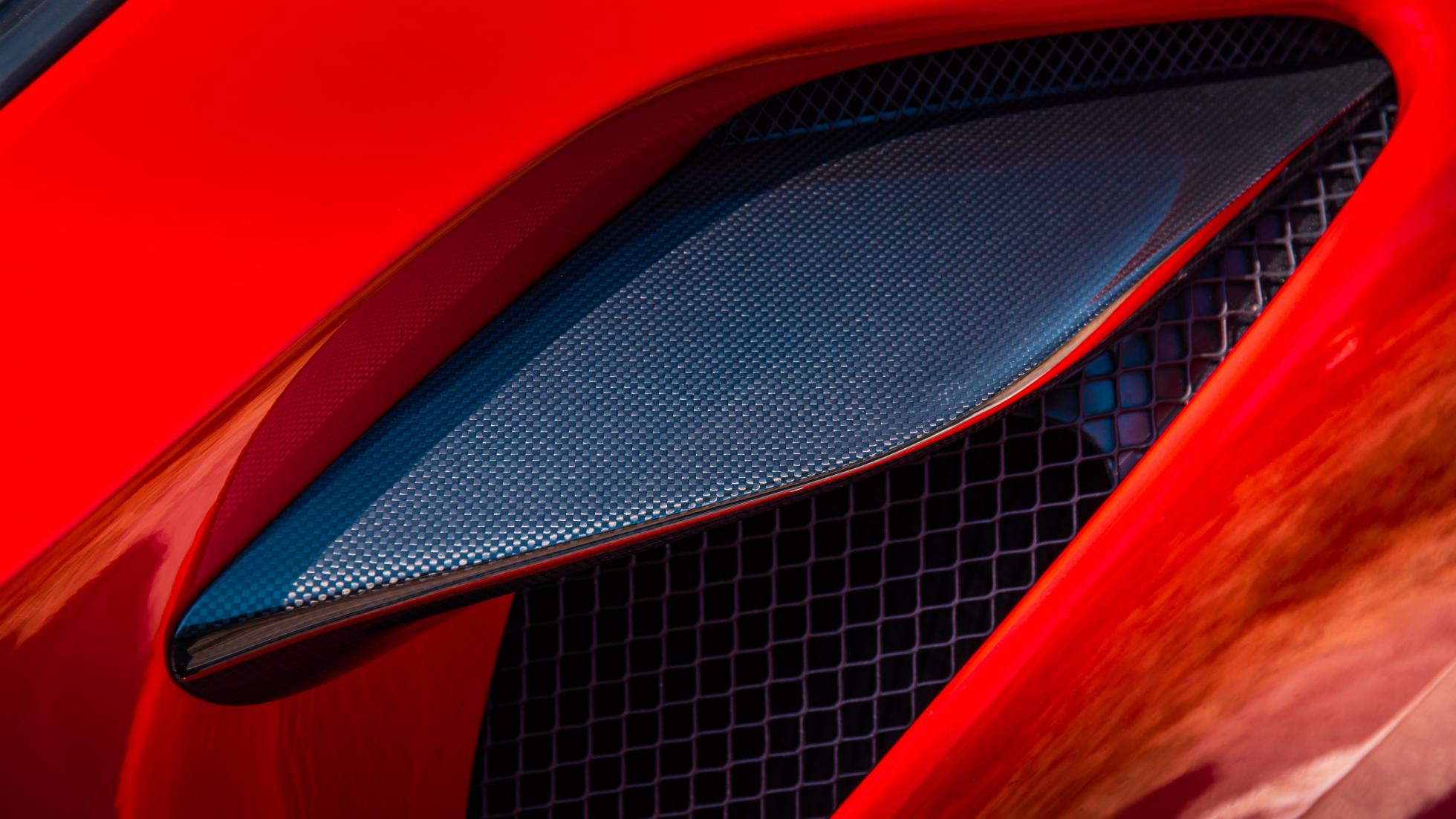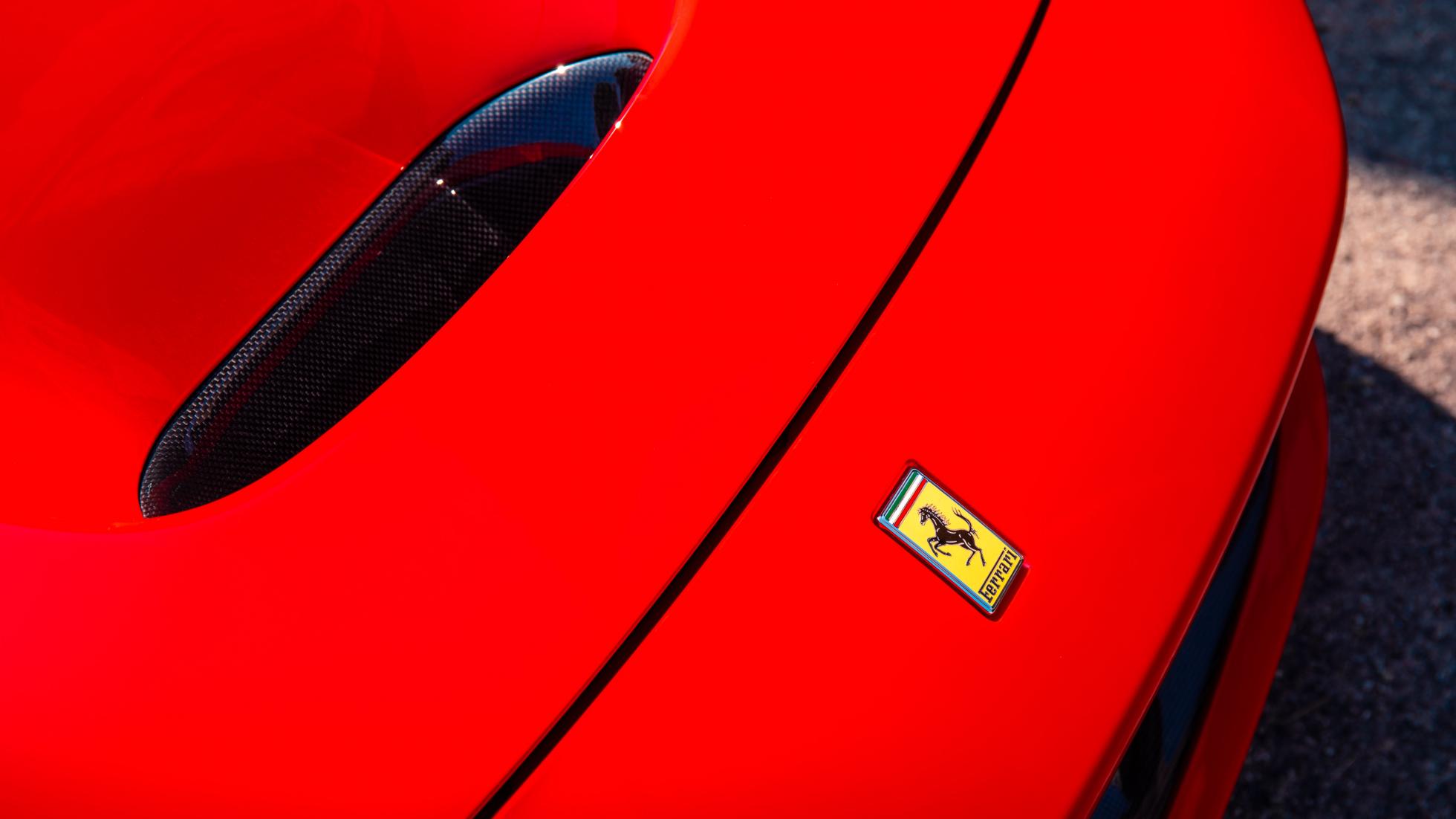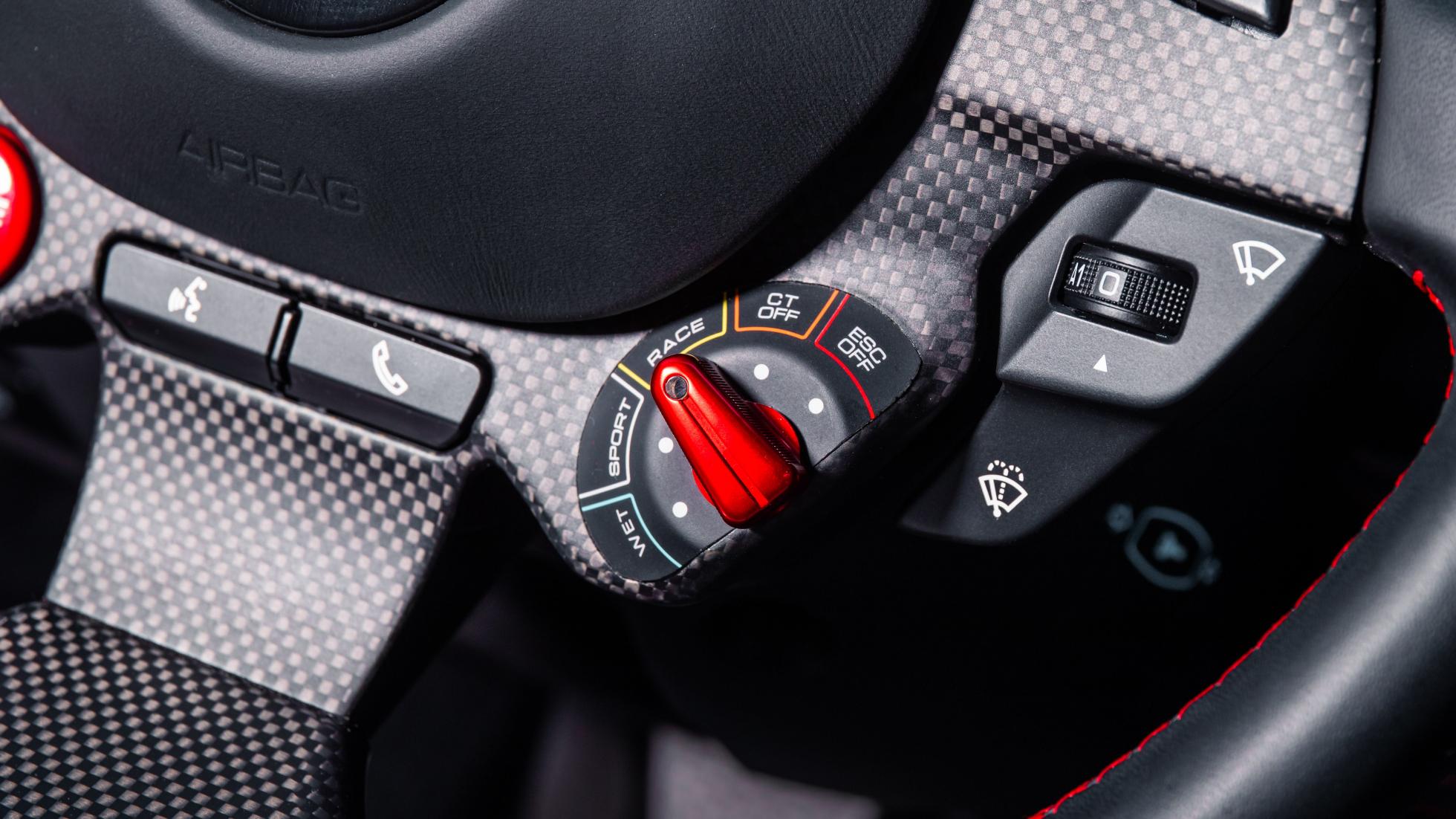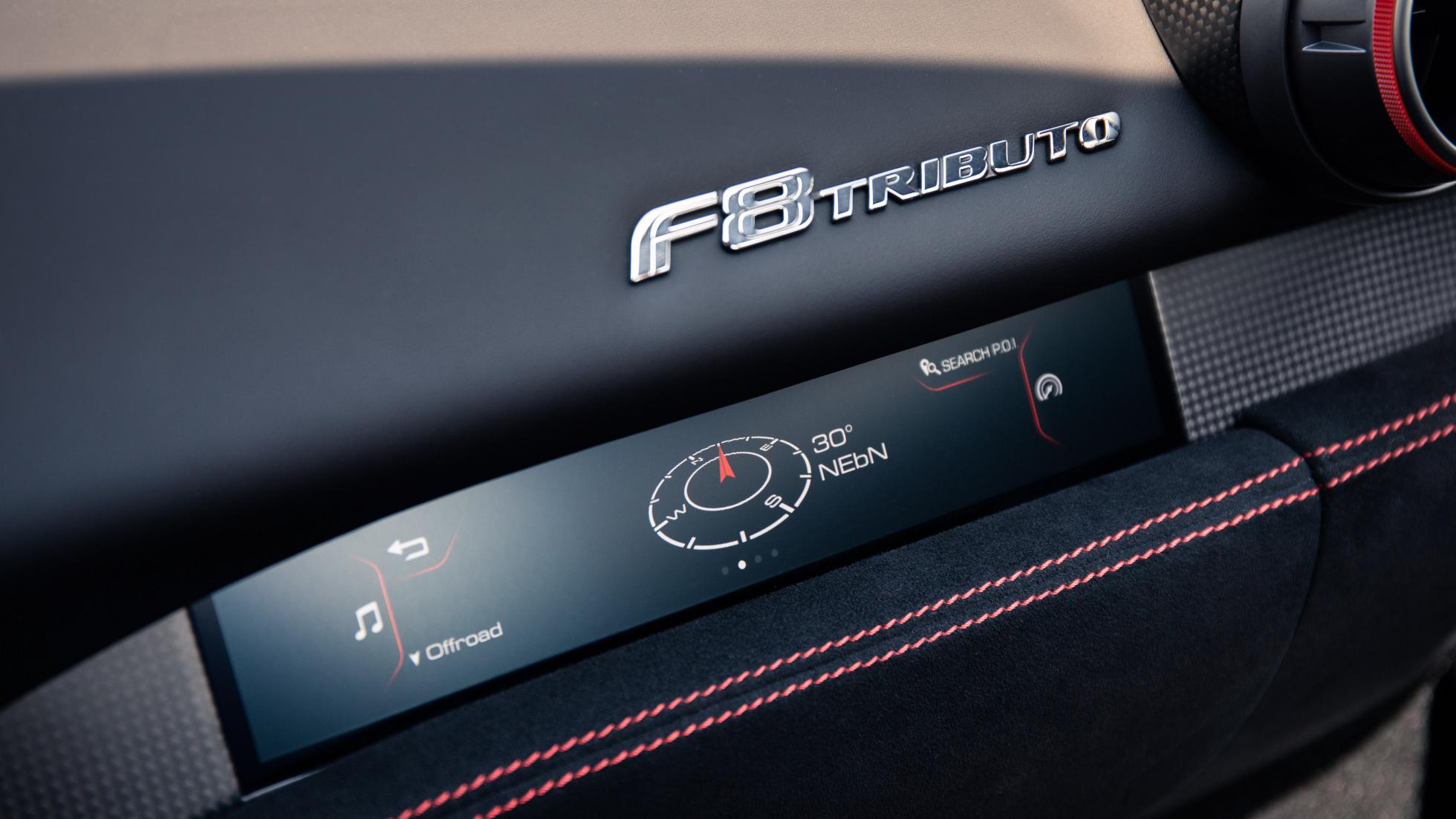Ferrari F8 Tributo Review: 710bhp supercar tested
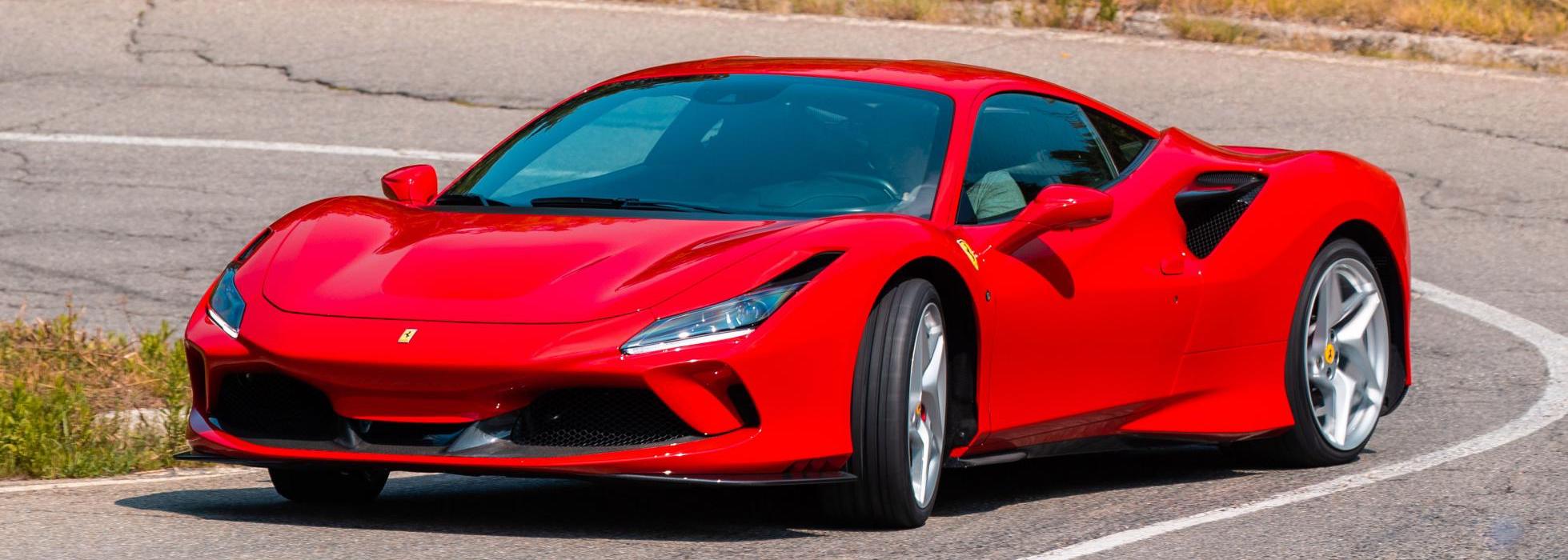
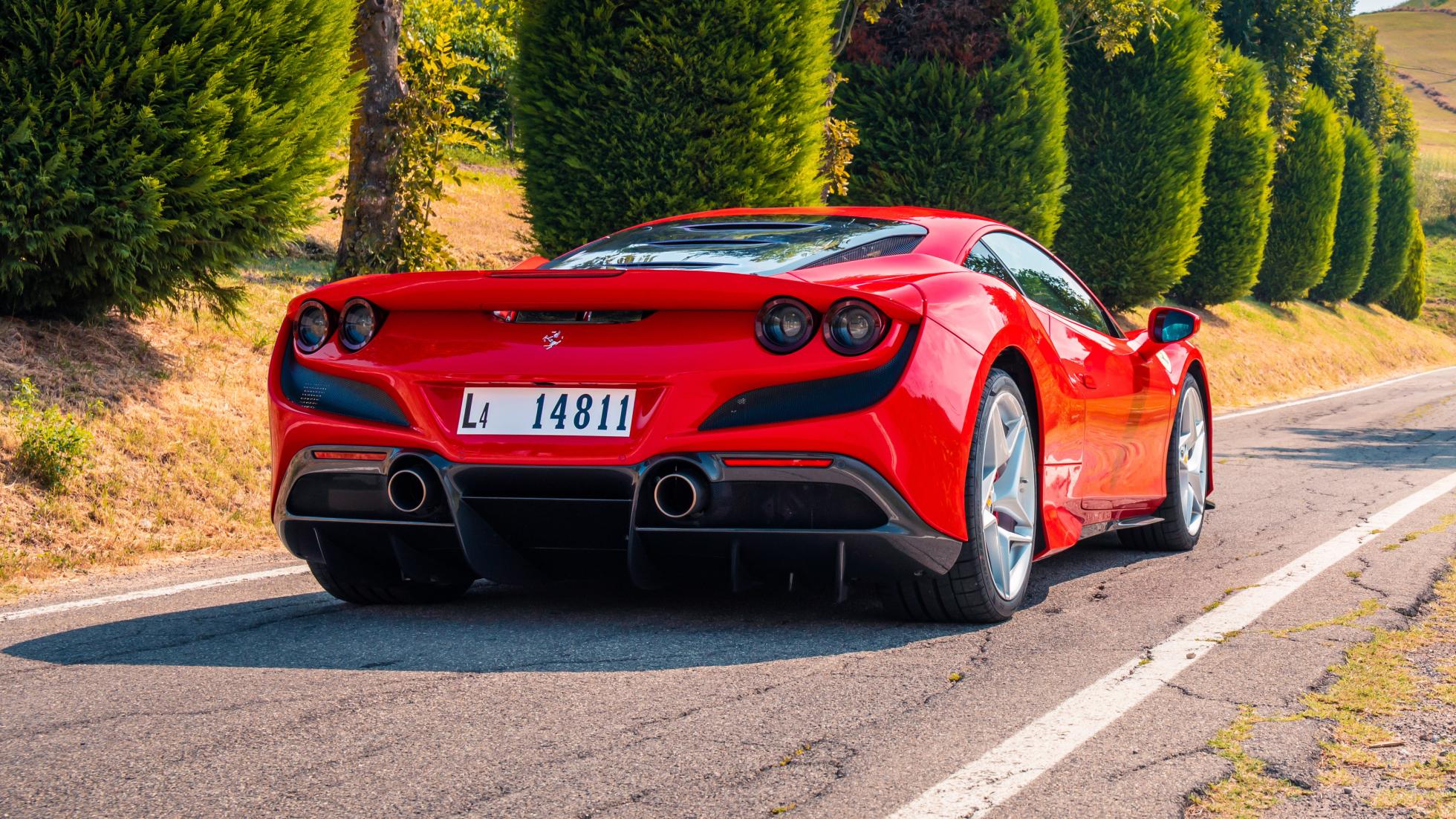
OVERVIEW
What Is It?
For all that Ferrari is, well, Ferrari, sometimes the world’s most famous car company can come over curiously… needy. Its 3.9-litre twin turbo V8 has won a hatful of awards, and boy is Ferrari happy about it. The best engine of the past 20 years? Apparently so, according to the International Engine of the Year jurors, which hasn’t stopped its creators from reinvigorating it, wrapping it in a heavily revised body and calling it F8 Tributo. Abba got Bjorn Again, Oasis No Way Sis. Now Ferrari is paying tribute to itself. Take that, McLaren.
And what tunes this thing can play. The elevator pitch on the F8 is ‘more user-friendly 488 Pista’, broadening the special series car’s intense dynamic palette to include greater refinement and on-board comfort. It’s also touted as the conduit for a new design language, although we’d argue that some of Centro Stile’s riffs have been rehearsed on Ferrari’s SP one-offs.
You might also speculate that the Tribute moniker hints that the mid-engined V8 – a Ferrari staple since the 308 GTB arrived in 1975 – has reached an evolutionary end-point. Ferrari is working on a down-sized V6, and the word is that a new modular engine family is imminent that should secure the formats that have made Ferrari what it is, until the point internal combustion is banned, anyway. But maybe no more V8s.
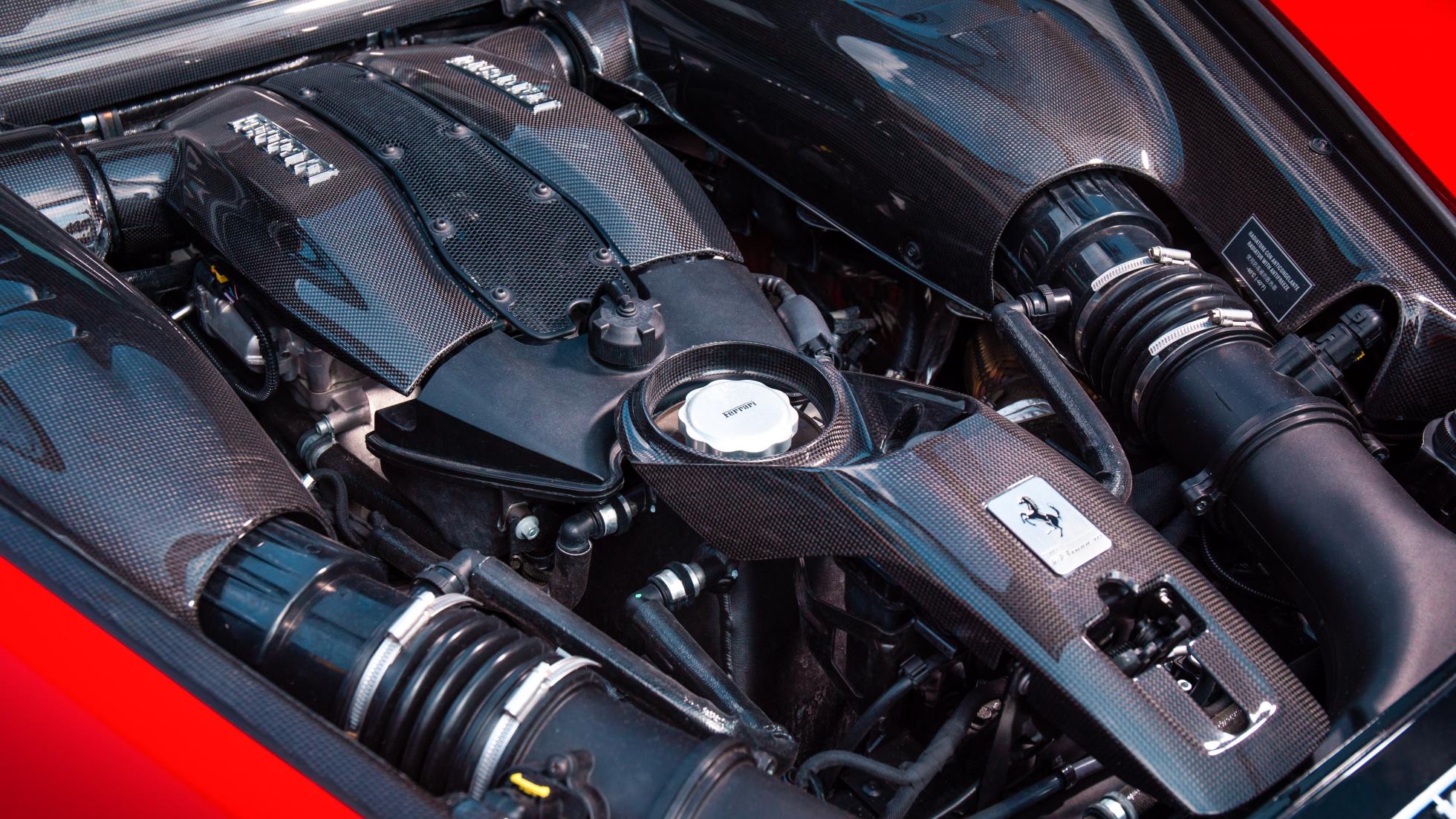
The days when Ferrari made engines and threw the rest in for free (© Enzo Ferrari) are long gone. The 488 Pista’s engine was the starting point here, but even that epic was deemed improvable. This latest bi-turbo unit certainly nails the numbers: 710bhp at 8000rpm, 770Nm of twist, and an incredible specific power output of 182bhp-per-litre.
The F8’s intake is borrowed from the Challenge race car, and the air intakes moved from the car’s flanks to the rear either side of the blown spoiler. The cooling flow, says Ferrari, is higher and more energetic, the car’s thermal efficiency greatly enhanced. Combustion has also been improved, the pistons and cylinder heads have been beefed up to cope with the higher loads (peak pressure in the combustion chamber is up by 10 per cent), and there’s less inertia in the rotating masses.
In other words, the engine ramps up at a rate that is frankly dizzying for a road car. The redesigned exhaust manifold is 9.7kg lighter than the 488’s, it’s made of Inconel, it’s cleaner, and up to 5dB louder. So many apparently incompatible aims reconciled.
GT and Challenge racing aero learning also influences the F8’s shape. It’s 10 per cent more efficient overall than the 488 GTB, the S-duct that first appeared on the Pista is here and tidies up the airflow and increases downforce on the front axle, there are brake cooling intakes at the top of the headlight apertures, the blown rear spoiler has been reworked and its turning vanes increase downforce without adding drag, and the underbody now features vortex generators.
Ferraris are clearly much more technical looking cars these days, but the company’s design team has become expert in turning what could be unappealing aerodynamic demands into something that looks bang-on.
DRIVING
What's is it like on the road?
Every Ferrari should be an entertainment – visually as much as anything else. But they’re driving tools ultimately, and in this regard the F8 Tributo is nothing less than a supreme piece of engineering that advances key aspects of the entire experience.
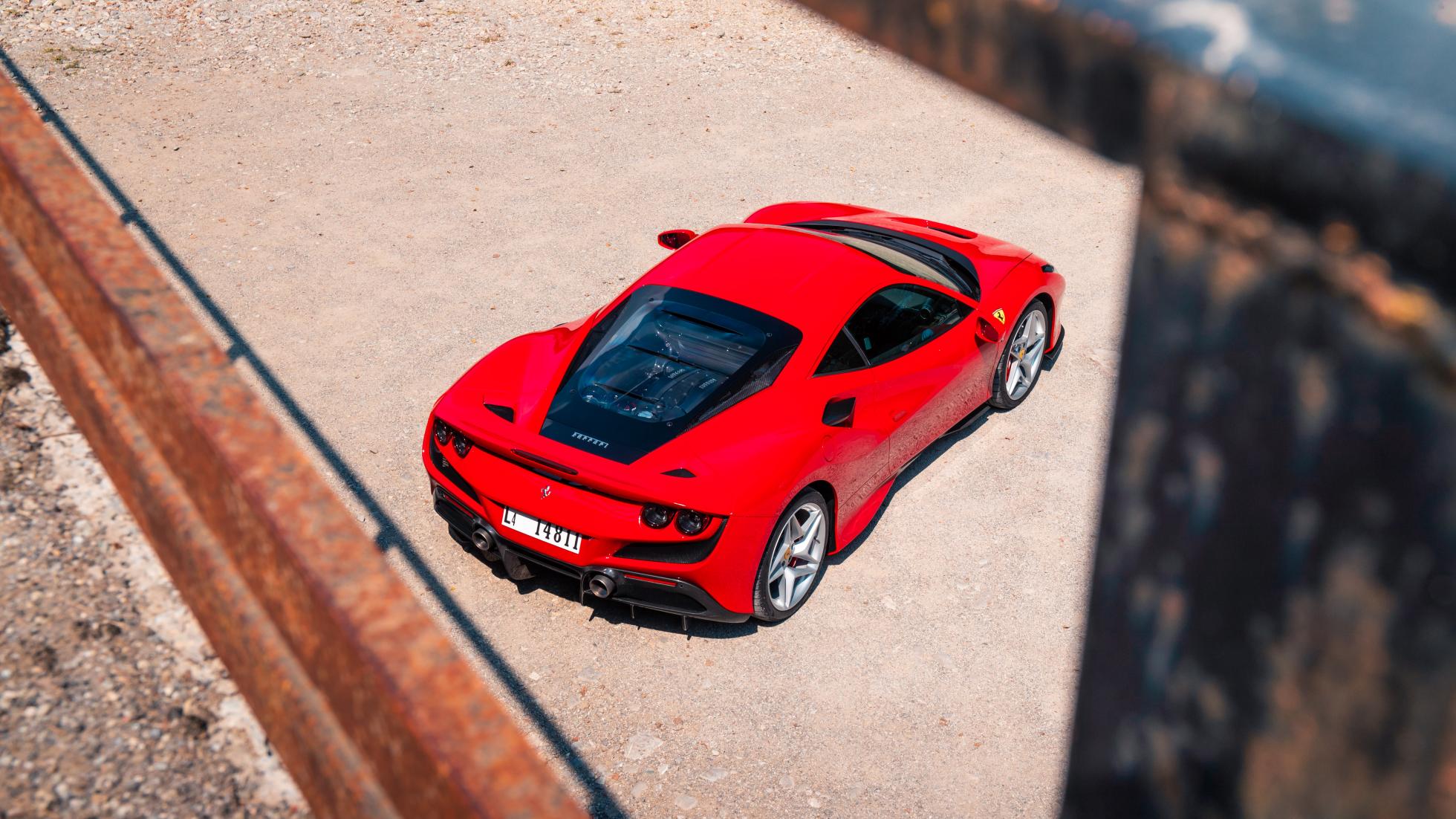
Though not always in the ways you’d imagine. Yes, it’s fast enough to have you inventing vivid new profanities, and though the seven-speed dual-shift ’box doesn’t have the ‘gun-shot’ snap of the Pista’s shift, the way the F8 harnesses the energy coursing through it at full tilt is still mind-bending.
Equally, flooring it in fifth gear from 40mph (64kph) or noticing how happily it mooches about in seventh is arguably just as big a testament to Ferrari’s achievement. Rarely has an engine this mighty managed to be so docile.
Forced induction manifests itself in monumental shove, anywhere, anytime, without hurting throttle response, and Ferrari’s variable torque management ensures a breathtakingly linear delivery.Its ride remains borderline miraculous, given the forces at work. Yet it also goes pretty much like the Pista. Suspicious as I am of the SSC (Side Slip Control) algorithms – now in v6.1 – the software is newly integrated with the ‘Ferrari Dynamic Enhancer’ which governs lateral dynamics in Race mode with spooky seamlessness. Less steering input is needed to catch and hold a slide.
In short, numpties are less likely to crash while the more competent will find themselves instigating the sort of drifts that will leave long-term sweaty-palmed mid-engined Ferrari adherents slack-jawed.
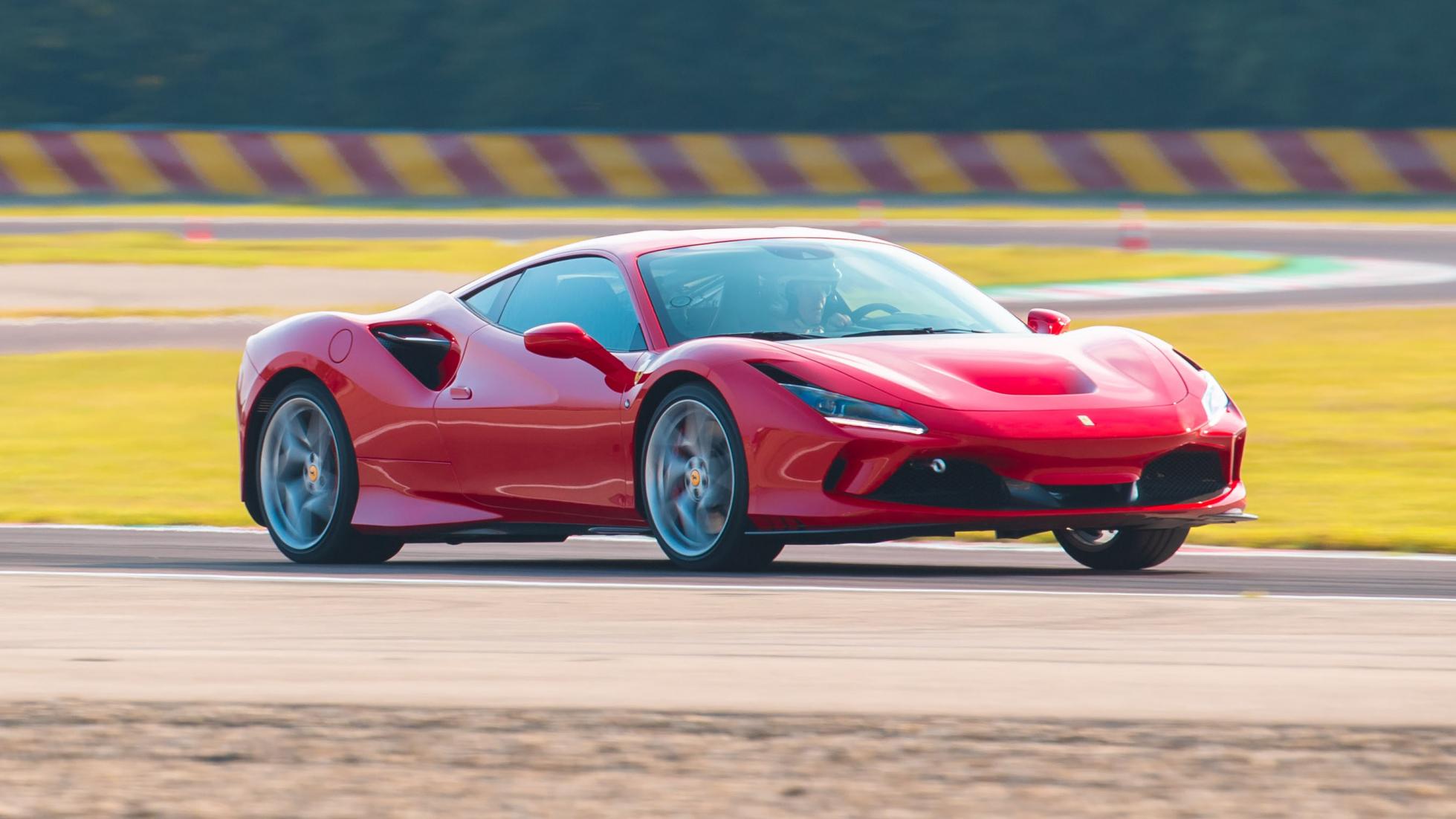
Keep the systems firmly on and the F8 is equally adept at metering out all that power for maximum exit speed. Ferraris are now effectively super computers on wheels, but the sensations are still engagingly analogue. And even the rev limiter has been finessed, so that its influence isn’t felt until bang on the 8000rpm red line.
Around Fiorano, we tried an F8 shod with Michelin Pilot Sport Cup 2 rubber. These are fabulous tyres, and the effect is magical. The F8 has an astonishing front end, but the middle and rear stay right with it through apex and entry. With all the electronic guardians off, 710bhp and the forces of physics still gather to remind you that some things remain non-negotiable, and the F8’s low polar moment of inertia means you need your A-game. So its chassis isn’t vice-free, but nor is the software hiding anything malign. As ever with a 21st century Ferrari, the steering is initially hyperactive but quickly appreciated. And the brakes, Brembo carbon ceramics, are magnificent.
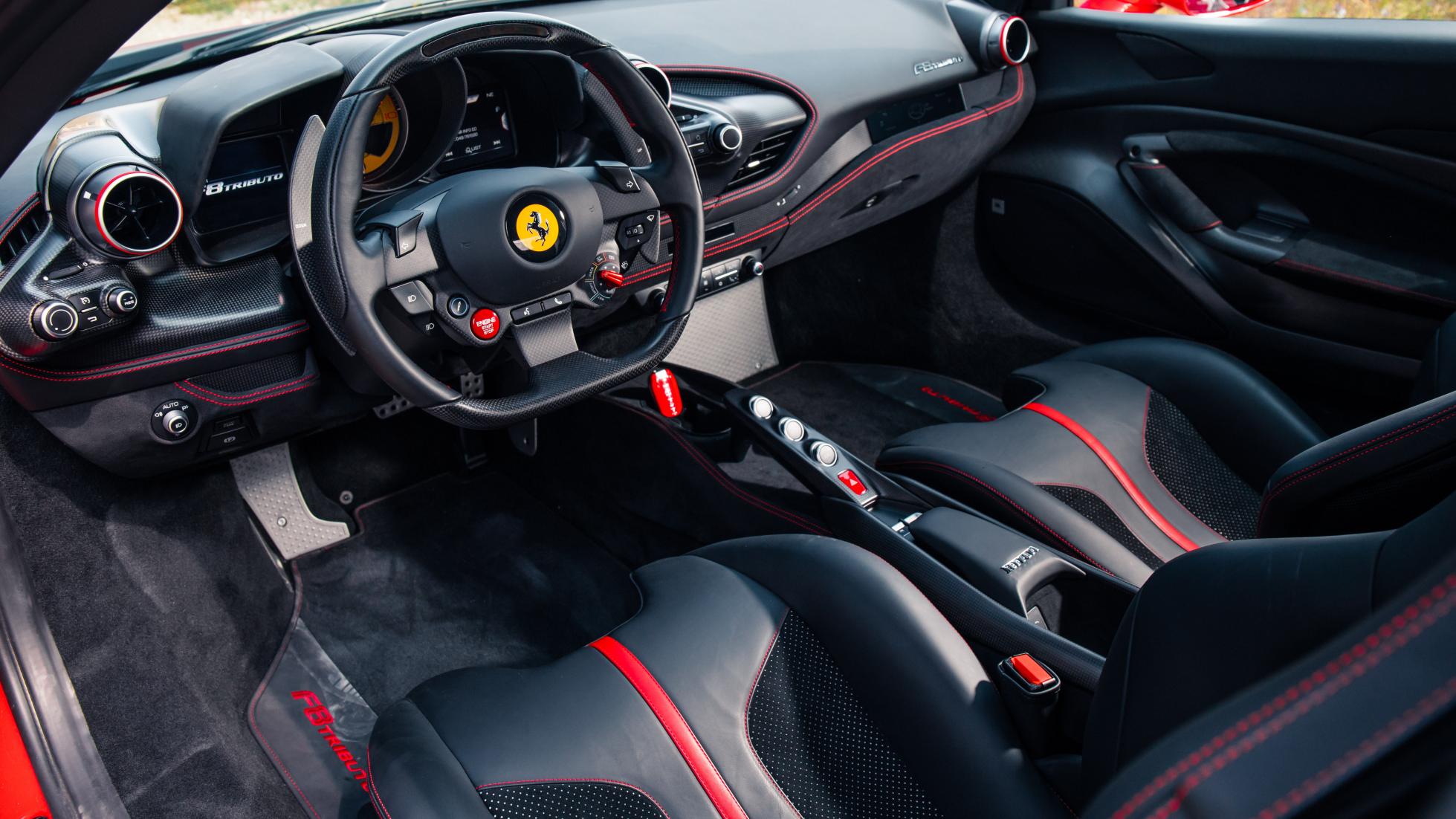
ON THE INSIDE
Layout, finish and space
This is the area wherein Ferrari sometimes manages to steal defeat from the jaws of victory. Happily, the F8 Tributo feels beautifully well made, the driving position is fabulous, and although the actual look of the dashboard layout remains a little disharmonious, it all works much more effectively than in previous iterations.
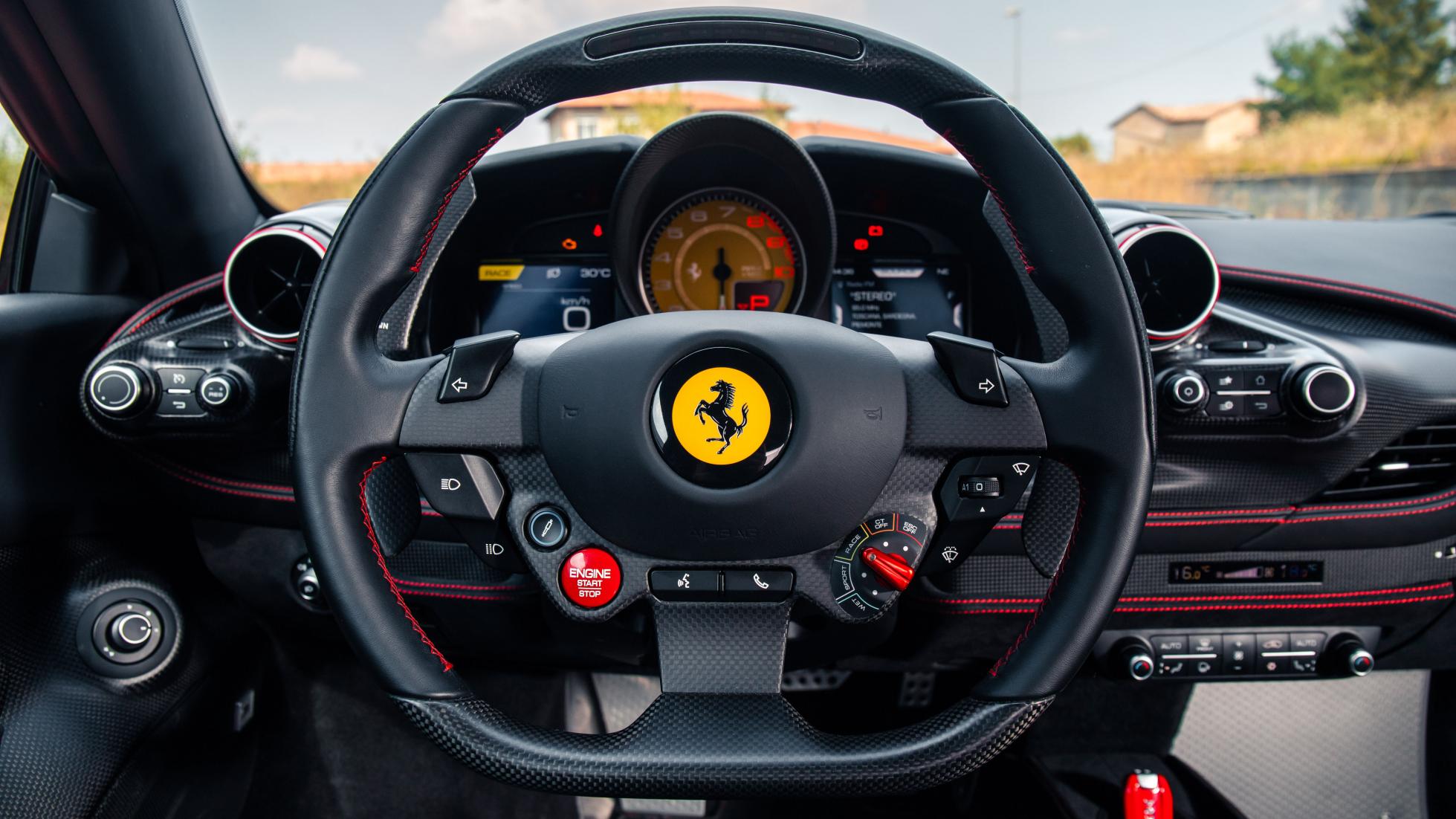
The main display keeps the rev counter front and centre, with supplementary screens either side for engine and chassis info, and audio and sat nav. The latter was the one that could have frustrated the world’s finest minds, but either we’ve got used to it or it’s more intuitive. The new generation steering wheel is similarly easier to use now, the indicator buttons actually doing what they’re supposed to, and you are less likely to trigger the wipers when you want full beam. The air vents have been redesigned, and have aluminium or optional carbon fibre surrounds.
A central bridge houses transmission controls, and looks great. There’s storage beneath it for your phone, but it took me fully 20 seconds to extricate mine and I haven’t exactly got sausage fingers.
One final point: anyone with feet larger than a size 10 might find the brake and throttle pedals a little too close together for comfort. You’ll need your finest hand-made Tod’s driving shoes to do your best work.
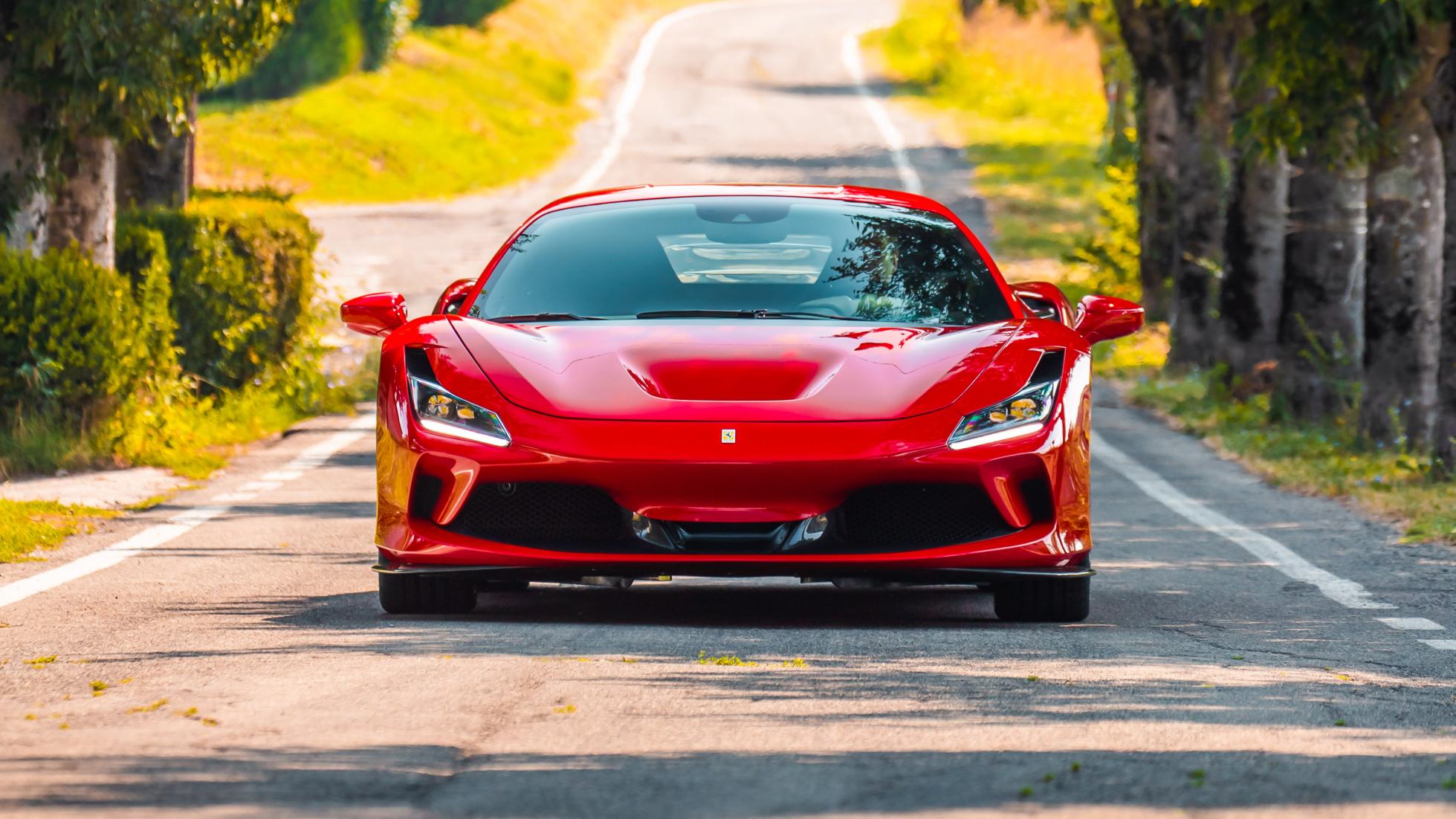
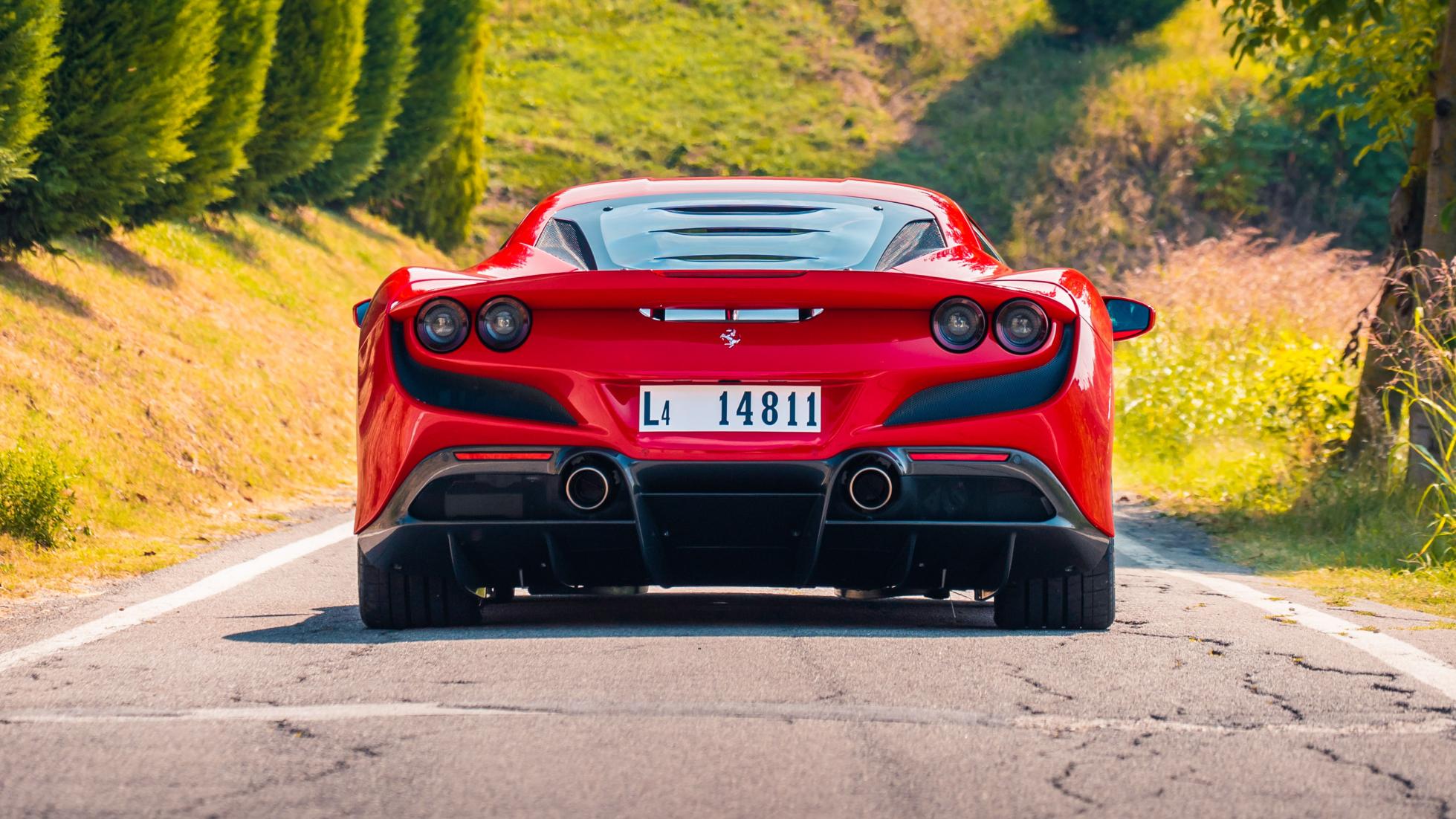
Never an easy section to write given the ‘money-no-object’ level we’re at here. However, at this point it’s worth taking a stroll through the options list: on average, owners will add around £45k to the F8’s list price; I’m amazed it’s that low.
Start ticking the boxes with the words ‘carbon’ and ‘fibre’ in them and things will rapidly add up. Carbon fibre door panels are £3936, dash inserts £3840, race seats £5184, engine bay covers £4512, the race steering wheel is £2880, and a carbon fibre engine manifold £5568. We know carbon fibre isn’t cheap, and McLaren is equally pricey so we’ll let it go.
But Ferrari does royally take the mickey elsewhere: for a car whose list price is £203k, surely Premium hi fi (£3552), a rear parking camera (£1536), and Apple Car Play (£2400!) should be standard. And £4704 for fully electric seats is similarly hair-raising (or buttock-clenching). A smoking kit, meanwhile, costs £336. Yep, that’s a £336 ash-tray.
Ferrari hasn’t yet released final fuel consumption or CO2 emissions figures, but the 488 claimed 24.5mpg and 260g/km of CO2. As impressive as the final figures likely are in the circumstances, don’t expect Greta Thunberg to be ordering an F8 Tributo. The car also runs on 98 RON. Investment potential? Good, if not in the limited series ball-park. Used 488 GTBs with circa 5000 miles on the clock are in the £165-180k bracket, and I found a 2000 mile, 2017 car – whose list price was £261k – for sale at £188,850. You’d be talking double that for a 488 Pista.
VERDICT
Final thoughts
"As it stands, the F8 Tributo is a suitably stunning send-off for the V8 bloodline, and one of the year’s undoubted stars."
Ferraris used to be overloaded with charisma, but – whisper it – not quite as technically advanced as legend has it. Now those two areas are battling for supremacy, and while the F8’s lightweight Lexan engine cover is slatted in deference to the F40’s, the new car is almost as thrilling as its Eighties forebear and the 488 Pista whose components it borrows – while being vastly easier to live with on a regular basis. Its engine is an undisputed masterpiece, and the progress Ferrari’s engineers are making in both the hard- and software areas is hugely impressive. Let’s hope they can work similar miracles with the V6…
As it stands, the F8 Tributo is a suitably stunning send-off for the V8 bloodline, and one of the year’s undoubted stars.
| SCORE | 9/10 |
| FOR | Magnificent engine, stunning chassis and peerless ride/handling balance, dramatic design inside and out. |
| AGAINST | Software overload slightly pollutes the pure Ferrari experience, heinously expensive especially with a few options added. |
| PRICE | £203,476 |
"As it stands, the F8 Tributo is a suitably stunning send-off for the V8 bloodline, and one of the year’s undoubted stars."
